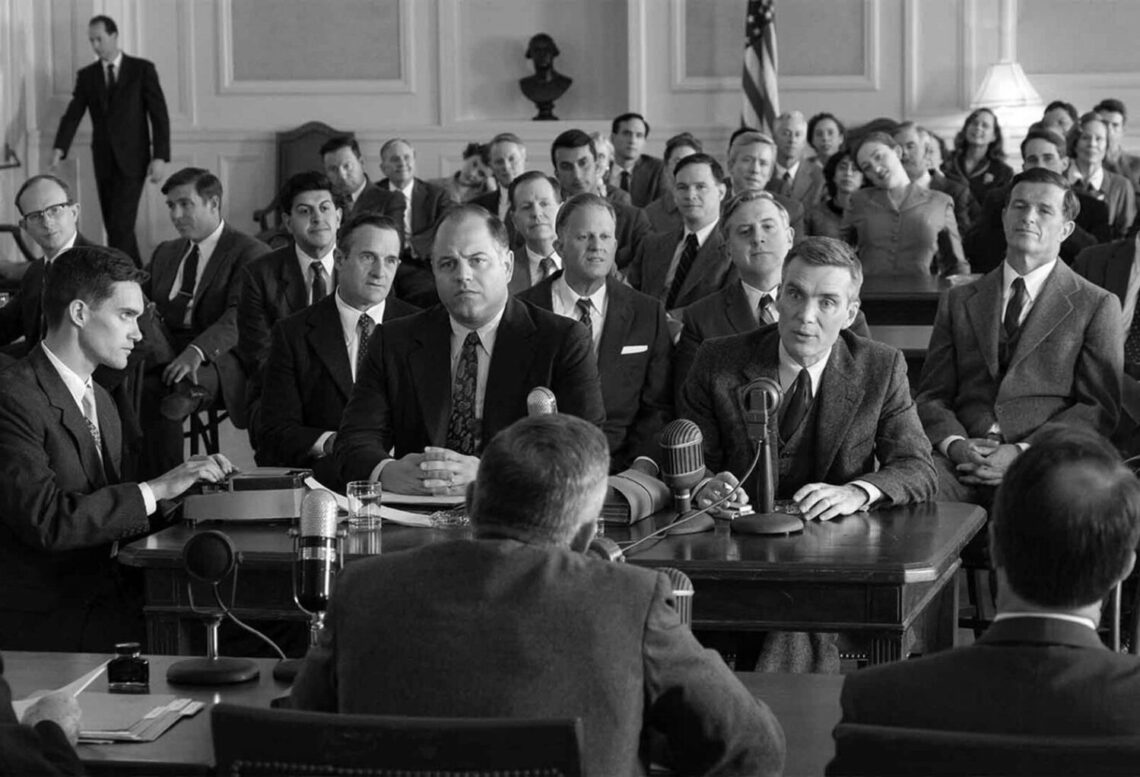The primary visual stroke in Christopher Nolan’s Oppenheimer isn’t, as you might expect, a wow 8K CGI rendering of atomic-fission heat-death but super close-ups of Cillian Murphy’s bony, glassy-eyed visage in the throes of one neurotic seizure or another. From his postgrad days at Cambridge to his last, persecuted post–Los Alamos guilt trips, Murphy’s J. Robert Oppenheimer, “the father of the atomic bomb,” seems in a more or less constant state of tremulous dysphoria. Nolan means to get under this enigmatic figure’s sweaty skin, and to do it in peripheral IMAX and tympanic-cavity-sundering Dolby 5.1. So he gets close, often. It might be the longest and most expensive Hollywood movie dedicated to a real man’s neurotic anxiety.
If only monster close-ups were by nature revelatory. Well, at least Nolan’s not out concocting yet another scientifically preposterous and incomprehensible “mind-bender,” but, rather, returning to the WWII era, where he so fabulously upended the brain-free summer movie paradigm with Dunkirk (2017). But Oppenheimer’s siring of the atom bomb is only half of the story Nolan wants to tell. The real intention of the film is to disinter a forgotten 20th-century episode of all-American skullduggery and write it back into history. David O. Russell attempted something similar with the 1933 Wall Street Putsch in last year’s Amsterdam; for Nolan, it is the Cold War–era ideological lynching of the leftist Oppenheimer, which effectively transformed him from a war hero and global figurehead into a pensioned nobody. Not, you’d think, the hot raw stuff of blockbusterousness.
The middle hour is a concise and exciting procedural about how to build a town in the desert intended solely for the creation of a city-flattening weapon.
At first, I wondered how wonky the capriciously wonky Nolan would get with all that cutting-edge science, as opposed to the other Hollywood treatment of Oppenheimer and the Manhattan Project,…
Read the full article here







